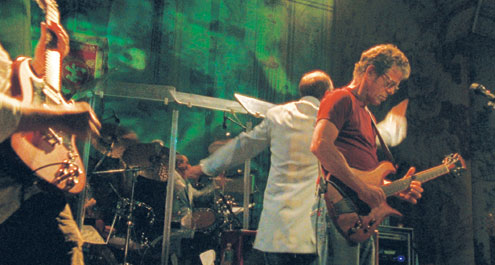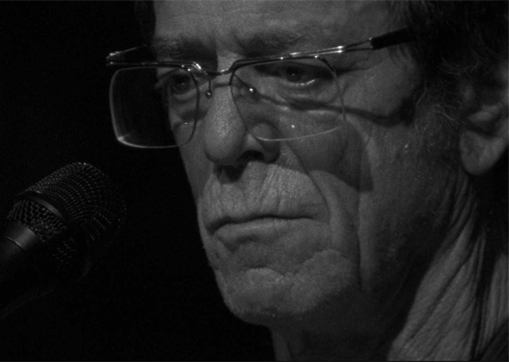There seems to be an influx of big budget concert films (Scorsese’s Shine A Light and U2 3D most notably) which explicitly use the cinema experience as a kind of proxy for being there. Modern technology allows us to feel like we’re on stage with bands we could normally only afford to see from the nose-bleed seats. But these are almost always baby-boomer-financed documents of bands that are past their prime: a chance for both director and artist to relive past glory.
But there is also a rich tradition of concert films that serve artistic rather than documentary purposes. Gimme Shelter uses the Stones tour as an ironic soundtrack to the implosion of late 1960s hippie culture. Jonathan Demme’s excellent Stop Making Sense is shot more like a piece of futurist theatre than a rock gig. Such films elevate the concert video above the experience of the concert itself.
Berlin falls somewhere between these two types. On one hand, it is a film aimed at replacing or improving upon the live experience (I half expected people in the audience to bust out lighters during ‘The Kids’ or applaud at the end). But in the hands of self-consciously arty director Julian Schnabel it is clearly intended to be a singular statement.

Schnabel’s contribution to the proceedings is a series of grainy projections spliced in between and on top of the actual concert. Schnabel’s visualisations veer from Stan Brakhage style collage effects to faked home videos telling the story of the album. While visually stunning, these portraits of the heroine ‘Caroline’ are so literal as to be kids book patronising: Caroline happy! Caroline sad! Caroline on drugs! They fix in place a potentially universal story and prevent the audience from attaching their own personal significance to it.
There is a real disjuncture between these 8mm fuzzy-memories and the High Def close-ups of Reed’s leathery face. If the visuals are seductive, the concert footage is unflattering. Reed’s backing musicians look like someone’s dad’s dinosaur rock band performing at a bar mitzva. The be-speckled guitarist, wearing a skater hat to cover his bald-spot, seemed titillated whenever Lou Reed swore. The stage is also cramped with a brass band and a kids choir in day glow green gowns. The drummer is enclosed in a perspex box (wouldn’t want to damage anyone’s hearing!)
Lou Reed sings the first half of the concert like Schnabel blackmailed him into performing. Not that this is any surprise. Even in his twilight years, Reed is like a self-conscious teenager who is too cool to admit that he’s enjoying himself. But as the concert continues and the story gains momentum, there are noticeable chinks in this facade. His emotions are all the more real for having tried to conceal them.

Schnabel’s injections of pretention don’t however, obscure the highly memorable encore. Anthony (Anthony and the Johnsons) injects a bit of youthful energy with an emotional (bordering on a seizure) rendition of ‘Candy Says’. Reed answers back with an electric version of ‘Rock Minuet’ before sleepwalking through the obligatory ‘Sweet Jane’ closer.
Near the end, we see one last Schnabel projection of Lou Reed from his bleach blond ‘Sally Can’t Dance’ era. This juxtaposition puts everything into perspective. The gap between Reed now and then simply adds to the melancholy of the concert. Reed was always a bit of a bitter old man trapped in a young man’s body – maybe he has finally grown into his world-weary attitude.
So despite its flaws, this is perhaps the way Berlin should be seen. Reed and Schnabel can’t really be faulted for reliving the past since the album was practically stillborn on its 1973 release. And Berlin is essentially an album about memory and regret best told through complacency not youthful anger. Schnabel may be a baby boomer indulging in a bit of hero worship, but at least he’s documenting a rare moment experienced by a handful of people rather than a stadium event seen by thousands. Still I’d rather see a film of a new band playing in their garage than another rock icon risking his legacy for a few million more dollars.



